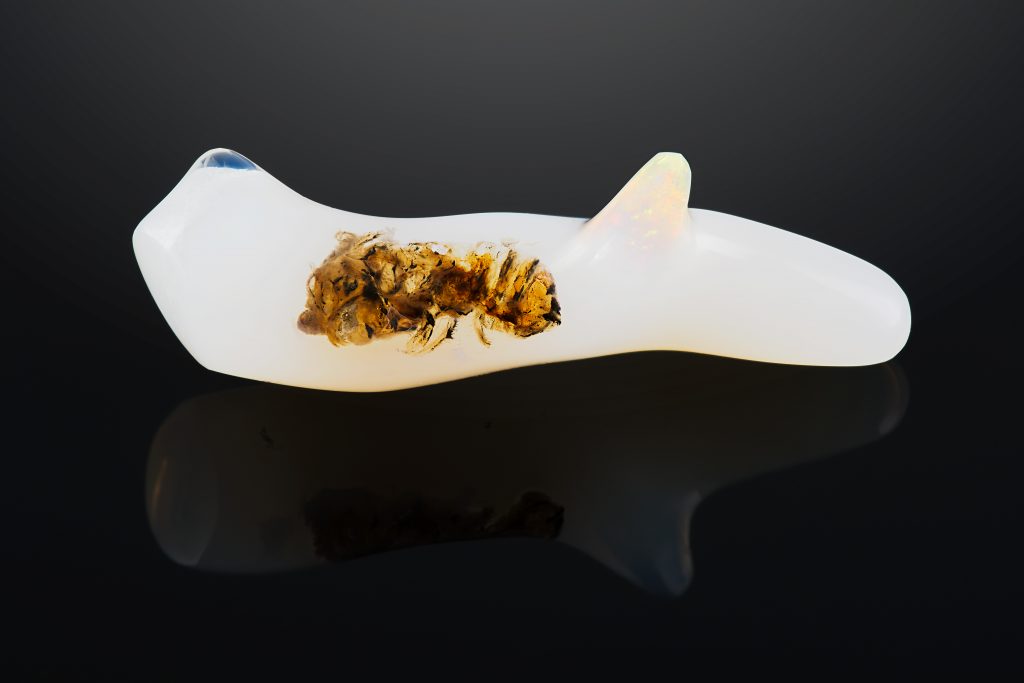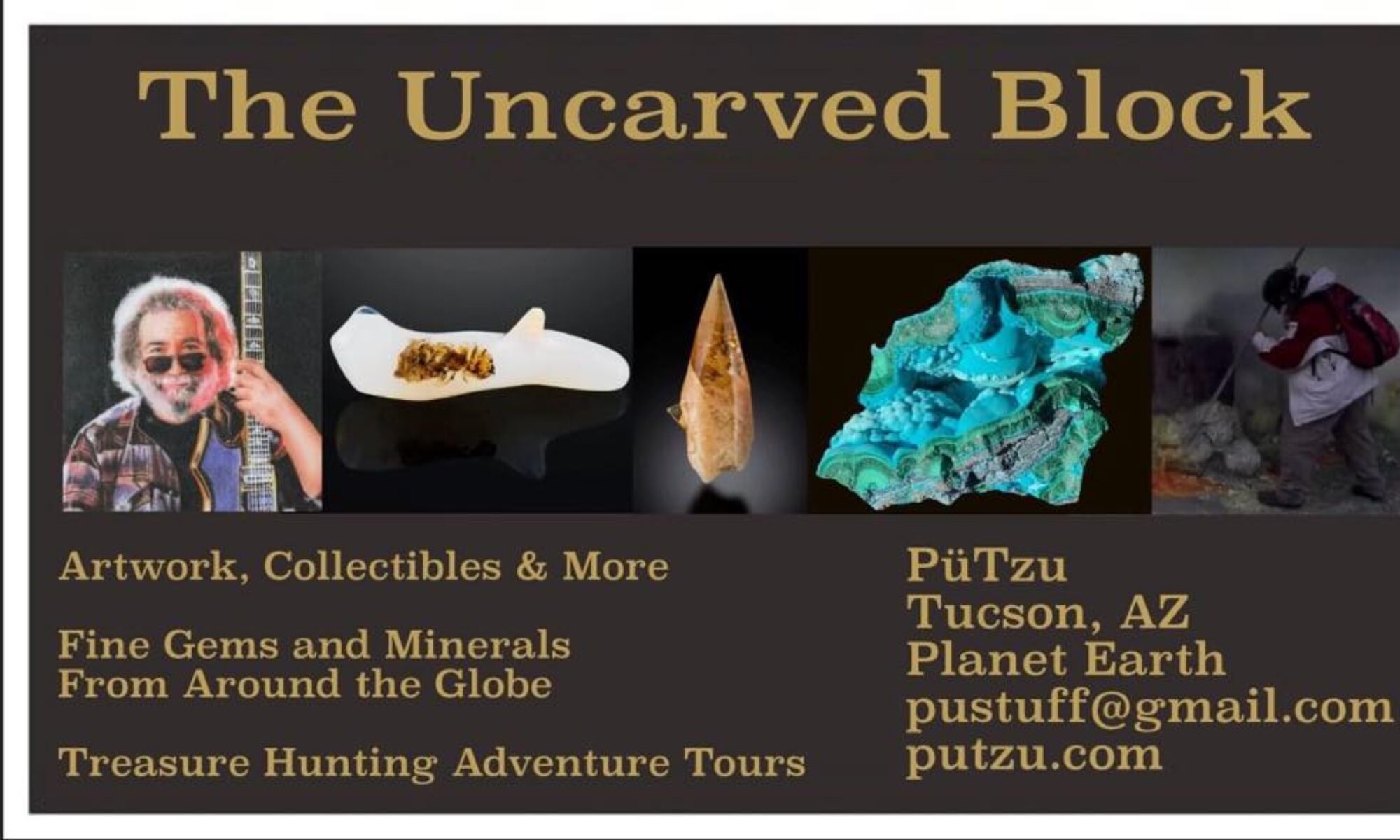Over the years, I’ve likened myself to fictional characters like Indiana Jones, and dreamed that I could be a larger than life explorer like Stanley and Livingston.
I’ve asked colleagues and people I look up to in the mineral business about where to go and how to find new and exciting things in the mineral world. Most stay pretty tight-lipped, guarding their knowledge as if they were alchemists or wizards.
So, I’ve set out on my own adventure, traveling the globe with the innocence and fascination of a child, all in search of something amazing.
In the past few years, I’ve jumped on flights 1/2 way around the world with very short notice to chase down something new and exciting.
Some examples are the “Grape Agate” from Sulawesi, Indonesia. I was among the first westerners to venture to the mining areas, even being right there, on the ground, in the area when that poor chap was swallowed whole by a 30 foot python in early 2017. That sure gave my friends and family a fright, knowing that I was in that area when the news and viral video broke of his friends finding and cutting open the snake to reveal his body.
In 2017, I got my flight as quickly as I could to go on an adventure to Morocco to chase down the new colorful tourmaline find there.
I’ve been fortunate enough to have been collecting minerals out of the ground on 5 continents, and though I’ve never pulled anything out of the ground that was really valuable, the experiences have been priceless.
Last week, it all paid off with my newest find. While I wish I’d actually found and pulled this thing out of the ground, I still am utterly beside myself and excited to have been able to acquire this piece and be responsible for bringing it to the world for the world to see.

Most of us have heard of insects being trapped in amber, either from seeing wonderful pieces of jewelry, or from the book and movie series Jurassic Park. And early in 2019, an amazing discovery was made from some of the same material out of Java, Indonesia, where a piece of opal was found to have what appeared to be a mosquito or an ant, encased in opal.
I’d never heard of or imagined such a thing before, and was blown away by the news of its discovery, as was most of the world.
So, I set the word out to all of my contacts in that area that I was looking for something like that.
Well, the patience and diligence all paid off. Not only did I find something “like that” but I found something that, I feel blows that one “out of the water” so to speak.
Though it appears surreal and unbelievable, what you see here is 100% real and amazing. I’ve had it analyzed by a local lab in Bangkok.
Now, I’m no entomologist, so I can’t say what the species is for sure, but what appears to be a bumble bee or yellow jacket or something similar, is mostly intact and completely encased in white opal. There’s even a bit of a play of color that opal is so famous for, adding to the uniqueness and amazingness of the piece.
Update: There was some research done on the previous find, and it turns out the other piece was analyzed and that one is in fact a cicada larvae, so it seems to reason that this is a similar insect and not a bee.
This deposit, about a 3-5 hour drive outside of Jakarta, Indonesia in an area known as Banten, is an amazing deposit.
It appears that sometime in the distant past, a large volcano erupted and the resulting pyroclastic flow of hot ash submerged an ancient lake and forest, and an entire region, all at once, preserving and fossilizing every living thing that was there, all at one time.
Over the eons of time, since this eruption, the silica rich waters from the consistent torrential rainfall that occurs in this area, flowed into the once organic materials and slowly replaced the. once thriving with life compounds, with silica. And through the magic of nature, and the water content much of this material turned to opal over time.
Somehow, in this piece, and the opalized mosquito that was found in early 2019, the shape and structure of the actual insect has been preserved, in tact, so we can see it today.
This piece was so well preserved, under minimal magnification, you can actually see hairs on the legs and make out 3 dimensional structure of the transparent body of the insect.
I have a number of other specimens from this deposit that show interesting features, such as opal that has replaced wood in a way that shows the grain of the wood with flashes of color lining that structure and other pieces that appear to have roots and twigs perfectly preserved either floating the opal itself or pieces that still maintain the shape and structure of many different species of trees and plants and even a number of gastropods and snail-like creatures.
This deposit, though first really discovered in the early 1980’s, is only just now being really explored and every day, something new and amazing is unearthed. I’m excited to see what will be next from this amazing and beautiful land.
Indonesia has long been one of my favorite places, with its 17,000 plus islands, many of which still remain unexplored with treasures still waiting to be discovered.
I love that chain of islands and all it has to offer, and expect I’ll be returning there for a long time to come.
Join me on this adventure, and enjoy.
